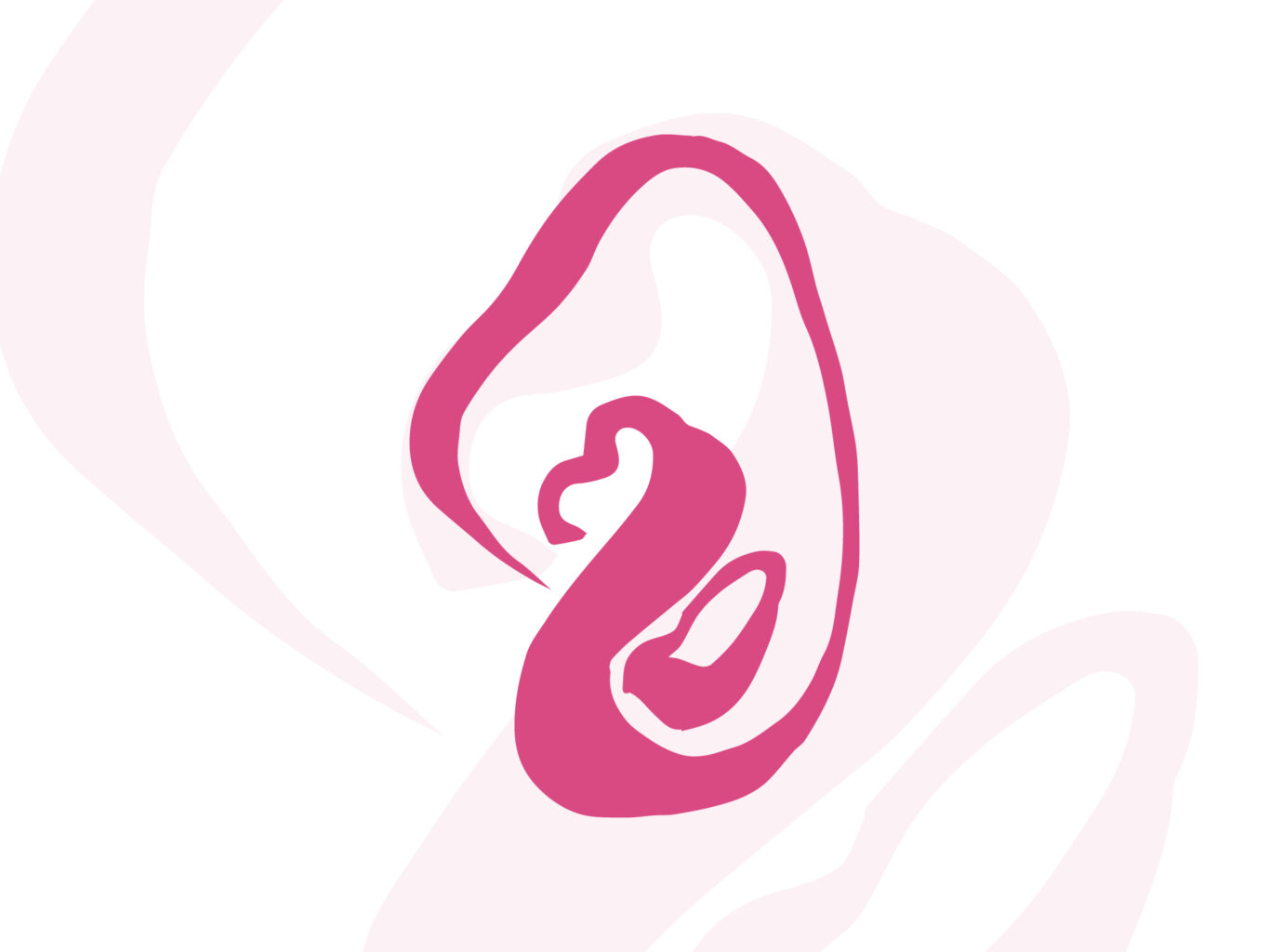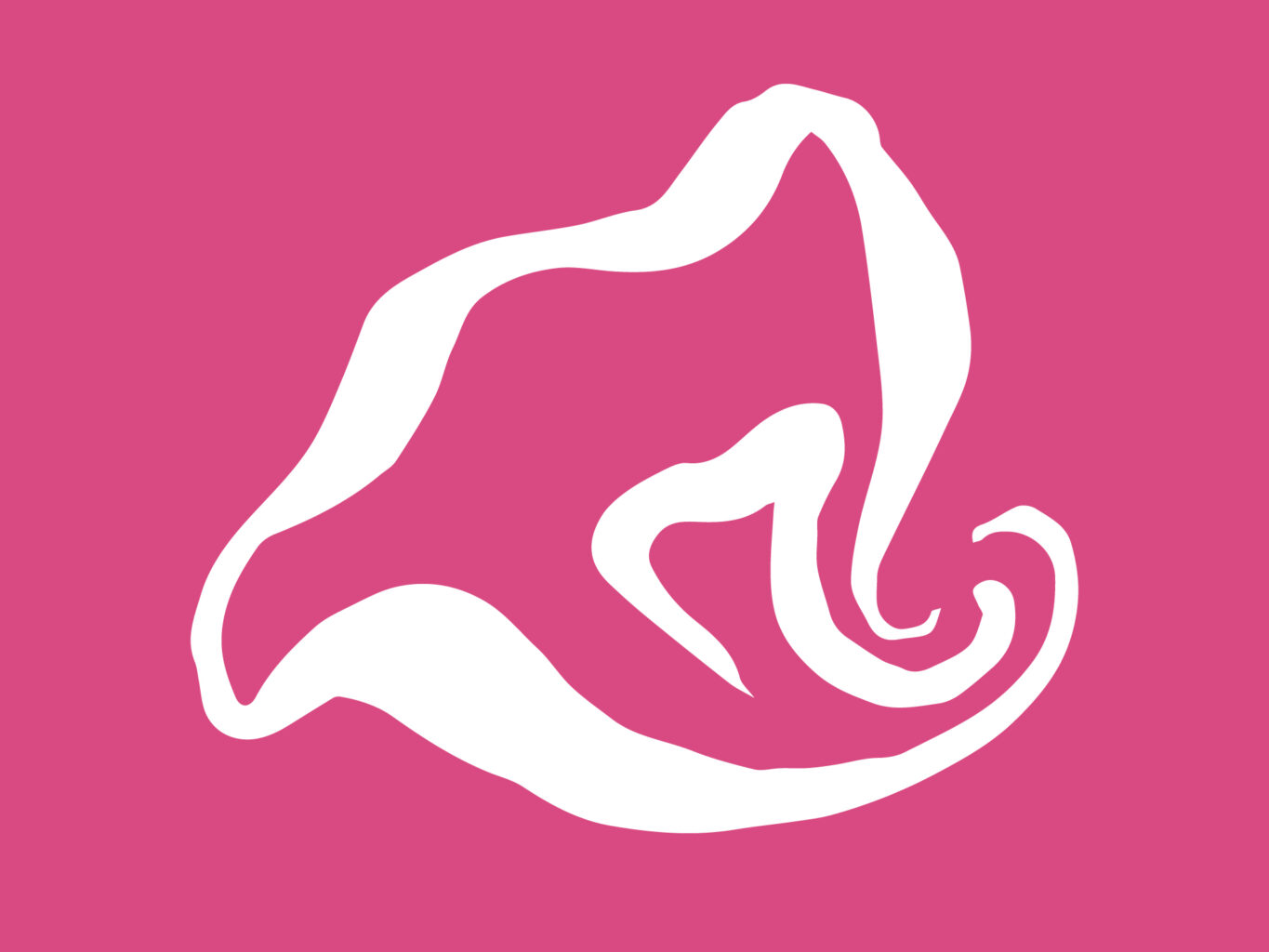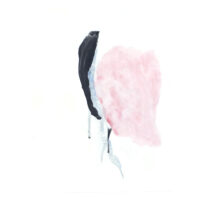Constanza Kaliks and Philipp Reubke head the Pedagogical Section at the Goetheanum. In the series ‹Anthroposophy – an Extension of Science?› they spoke about pedagogy as enabling what has never been seen before. It is a balancing act to mediate between the world that is and the still unknown future of the child.
Rudolf Steiner’s approach, from which the Waldorf school movement emerged, is a pedagogy oriented towards knowledge of the human being. The struggle towards this is the starting point – curricular decisions and methodological and didactic guidelines follow this knowledge.1 Knowledge of human nature is not outside the actor, who would then only be an executor, but rather lives in those who are pedagogically responsible. Otherwise, teaching would be based on normative instructions, which are not primarily anchored in the reality of the respective child and young person. Economic interests or scientific paradigms that are introduced into human sciences are then normative and generalizing and particularly formative. The individual child, the singular young person, is seen as an example of the determining general public standing above them.
Criticism of such a reductionist worldview and its consequences is asserted worldwide in the pedagogical field today, as well as in academic discourse; however, it is rarely taken into account in practical implementations, which are predominantly based on the economic principles determining educational systems.
The problem identified by Rudolf Steiner early on has increased dramatically in intensity and distribution and is currently being articulated from many sides. On January 29, 2022, the centenarian Edgar Morin spoke about the necessity of human knowledge in an interview with the Brazilian magazine ‹Revista Prosa e Arte›. Morin, a French philosopher and sociologist who has developed essential perspectives on the education of the 21st century, turned against the scientific reductionism of the natural sciences in its paradigmatic meaning as early as the 1970s: «The tragic thing about our current knowledge system is that it divides knowledge so much that we cannot ask ourselves these questions. If we ask, ‹What is a human?› we will not get answers because the different answers are scattered. And that’s precisely what I call complex thinking, a thinking that brings together individual parts of knowledge. […]
First, we must be aware that two barbarities increasingly threaten us. The first barbarism we know comes from the beginning of history: cruelty, domination, submission, torture, and all that. On the other hand, the second barbarism is cold and icy, namely that of economic calculation. Because if thinking is based exclusively on numbers, you no longer see people. What you see are statistics and stupid products. Ultimately, computation, which is helpful but only as an instrument, becomes a means of cognition, but a false cognition that obscures human reality.
As soon as the calculus begins, the human being is treated as an object. And today, with the rule of power and money, with the rule of the bureaucratic world, this is all the realm of icy barbarism. If you like, it is necessary to rethink politics, and we are in the prehistory of this moment. One must know whether the negative forces, the negative current, will be stronger than the positive forces that are trying to rise up in the world today and are still very scattered.»2
Between Becoming and Having Become
Pedagogy always takes place in a very fine, very sensitive balancing act. I want to describe one aspect of this balancing act below.

The child is born into an already present, already existing world: a reality that has become constructed over centuries, even millennia. Much of what is brought into the classroom is taken from this past. In this way, a task of education is to introduce newcomers to this world so that they can learn to be at home in it, live in it, and inhabit it. This reception is a condition of existence and is the first duty of those who are already here: to welcome the other and the new and to let them know that their presence is desired and affirmed; the prudence, care, and benevolence let the child experience: yes, they are wanted. Then at school age comes the world’s diversity: here, too, the child experiences the miracle of the many that have become – history, nature, mathematics. How much of what constitutes the beauty of the world and the happiest learning experience comes to us from the past, from what has already been thought!
And yet, we prepare the child, the young person, for a future unknown to us. School time will have consequences for your whole life. Rudolf Steiner speaks of the fact that life as a whole must be in the consciousness of the teacher, the educator: What is experienced today can have unpredictable consequences for us. What has already been known is thus a fundamental instrument for enabling the coming, the not yet known, and at the same time, it entails the danger that it binds us to the past and prevents the future. On the other hand, skipping what has become would make it impossible to make the world home. Education without content, without learning from what already exists, cannot prepare for the future because it does not tie in with anything – and thus remains incoherent. In a much-quoted, very meaningful text, Hannah Arendt writes about education:
«Education is the point at which we decide whether we love the world enough to take responsibility for it, thus saving it from the downfall that would be inevitable without renewal and coming of the new and young. Education is also the place where we decide whether we love our children enough not to drive them out of our world and leave them to their own resources and whether we deprive them of the chance to do something new and unforeseen for us and instead prepare them in advance for the task of renewing a common world.»3
In his book ‹The Principle of Hope›, Ernst Bloch speaks of the «not yet conscious» and the «precognition of the coming.»4 Likewise, the UNESCO report of the end of 2021 states: «Pedagogy is the work on the realization of transformative encounters based on the existing and the still to be created.»5
In wonderful form, Martin Buber writes about this novelty and unprecedentedness in his ‹Speech on the Educational›: «The human race begins every hour. Because of the massive fact of existence, the so-called world history, we forget too easily the fact that every child is born with a given, ‹world-historical› disposition, that is: inherited from the abundance of the world’s cultures and into a given, ‹world-historical› situation, that is: brought about by the abundance of world processes. It should not obscure to us the other, no less important fact, that despite all this in this hour, as in everyone, the unprecedented breaks into the stratification of existence, with ten thousand faces, the likes of which none had ever been seen, with ten thousand still unrealized, becoming souls – the creation result of one, emerged newness, primordial potential. No matter how much of it is wasted, this possibility is the ‹child›. This appearance of oneness, this one that is more than just procreation and birth, this grace of being allowed to start again, again and again, again and again.»6
Knowledge of Human Nature
The movement between what has become and what has never been seen before is a balancing act that constantly takes place in pedagogy. At this point and in this balancing act, the knowledge of human nature can form an ever-renewing, ever-changing orientation. It includes the need to expand the understanding of knowledge: it is not a reduction of human beings to their physicality that is required, but a perspective that tries to understand the soul life and the spiritual instance of human beings, their very own selfhood or their I, as a reality belonging to human beings.

The relationships between physical, mental, and individual instances are in constant becoming. It is essential to train the possibility of perception, expand it, and learn to draw attention to what is emerging so that the child can experience: they are recognized in their selfhood; they can contribute to the world in an understanding way. They are welcome! They are seen. They are allowed to see, understand, and love the earth and the world.
To do this, the teachers must know their subject. They must be able to develop ways to learn with and for the child. They must develop situational action skills and have access available to help the child connect with the world, experience, and knowledge of the world. Teachers are the central authorities of pedagogy. The UNESCO study already mentioned states: «Pedagogy is what enables every student to be part of a human relationship with knowledge, to open up a world of understanding, creativity, and sensitivity. Without teachers, there can be no re-imagination of curricula and pedagogy.»7
What flows in as science must first be remelted by feeling.
If the knowledge of the human being, which the teacher constantly seeks, becomes the actual orientation in pedagogy, however, the question remains, how can we be sure that what happens in school, in the classroom, or outside with the children is appropriate and good for the children? This question is often answered by an appeal to the past: the already known alone offers the standard of certainty. And yet the necessary insurance can also arise quite differently and from something very simple and very central: by the fact that not one person, but different people are around the child, a college, the others who see it and its becoming. They help to correct one’s own perception, to clarify it. This college is – ideally – in a constant exchange around the child, among themselves, and with the child’s environment: with the families and neighbors of the school, with the city and the country, with the language, the culture, and the times. The college is an instance of the public and conveys to the public where the child still needs to be protected.
Almost a hundred years ago, on October 8, 1922, Rudolf Steiner said to young people interested in pedagogy: «Knowledge of human beings – not knowledge of human nature which makes us cold towards our fellow human beings – but knowledge which makes us trusting must become the basic nerve of future pedagogy.»8 A knowledge of human nature that gives the child confidence, including the confidence that the world that has become is changeable – through their presence and through the presence of others who can change themselves and the world.
Constanza Kaliks
Acting from Knowledge
At the beginning of the 20th century, the pedagogical guiding principle ‹Acting from the knowledge of the expectant human being› was an important guiding principle for some reform pedagogues. Two influential figures from Geneva at the time were Édouard Claparède and Adolphe Ferrière. In 1912 they founded the Jean-Jacques Rousseau Institute, an institute for the developmental psychology of the child. Medicine, biology, philosophy, social sciences, and psychology were taught, and the term ‹educational sciences› was also introduced. It was the sciences that were supposed to help in understanding the child. Claparède coined the word: ‹the Copernican turn in pedagogy.› It is not curriculum and content that should dominate the pedagogical discussions, but the question: How can we understand the child? How can we apply methods by which the child learns but does not harm their health? The two worked intensively until the end of the 1920s, also within the framework of the Ligue internationale pour l’éducation nouvelle, a movement in which most reform pedagogues worked together at the beginning of the 20th century, for the first time at a congress in Calais in 1921. Claparède and Ferrière were friends but also antagonists about the question of how educational science should flow into educational practice. Ferrière said that you always have to start with the individual child. Claparède, on the other hand, said that standardized tests had to be carried out, experiments had to be carried out on a large scale, and their results had to be used to develop universally valid laws and theories. Educational science in general or in particular? And should cultural studies and philosophy also belong to educational science? Or should only empirical science be included, which works according to the natural science model? Rudolf Steiner’s colossal undertaking to build up a school for almost 400 children in 1919 in a few months with a few teachers is, for me, the practical development of this Copernican turn in pedagogy. His position is also interesting concerning the question of the two quarreling friends. Steiner’s position was: both. It is essential that teachers deal with educational theories. But at the same time, they would have to come back again and again to the empirical, phenomenological observation of the child. In the study of child development, spiritual science, i.e., not empirical psychology, must also play a major role.
Pedagogical Conference
According to Steiner’s proposal, how should this Copernican turn take place in the Waldorf School? He had planned a special weekly event for all teachers. This was and is a kind of educational research seminar, a training event, within working hours, not on Sundays or after work. This session is still called the ‹Pedagogical Conference› in Waldorf and Rudolf Steiner schools today. According to Steiner’s suggestion, three aspects should play a role in this event. Firstly, dealing with theoretical studies on child development through texts, presentations, and small group work. Of course, this was the preoccupation with Steiner’s own ideas on child development. Today, however, it is indispensable that other authors are also consulted as a comparison and reference to the current educational discussion.

Secondly, gathering observations of a child in a mood of unprejudiced interest with empathy. From the observations, hypotheses are then carefully developed to understand the special qualities and difficulties of the child to finally decide on strategies on how to support the child even better. Thirdly, consideration of individual colleagues’ educational practice in plenary or small groups. How was this or that topic introduced? What difficulties, what surprises were there? How was action taken in this or that pedagogical situation? This means learning together from your own mistakes, from your own way of working, together in a team. In these three central aspects of the pedagogical conference, a special step is taken regarding the question: How can a door be opened in the past, through knowledge, through which the becoming can enter?
There is theoretical and empirical research, developmental psychology, anthropology in general, and in detail about the particular child. But this should not only take place in research institutes but, above all, in the circle of teachers who practice daily with the child and live with them and educate the child. This weekly training event is the heart of the school. If we are trying to identify essential characteristics of Waldorf education today, then we would have to put this first. Because this is the original idea through which Steiner combines the approaches of Claparède and Ferrière.
Theory and Practice
It was one of Steiner’s central ideas that the child is not born as a blank slate, not only as a physical organism, but also as a mental-spiritual individuality that has undergone forms of existence in a non-spatiotemporal dimension and past earthly lives. Doesn’t this affect the ideological freedom of teachers, who may be skeptical of this idea? Anyone who asks this question does not consider how Steiner thinks of the relationship between theory and practice, especially in education, that is, in self-education. Never can a compelling maxim of action be automatically derived from a scientific position, a theory, or thought. If this happens, the peculiarity of the child or my peculiarity in the way of self-education cannot be taken into account. Then the unprecedented cannot be promoted. Here is a quote from Steiner’s cycle of lectures to Swiss teachers at the Goetheanum during the Christmas holidays of 1921/22: «What comes into consideration most in education are the feelings about the nature of human beings. And if we stand in the right way next to the expectant human beings through an insight into human nature, then we are good educators. Yes, even the paradox may be asserted: the individuals may do in detail what they want – everyone will set this up according to what they have just learned as an educator in life – if individuals set things up as they want, bringing only that which is deposited in their heart through a correct insight into human nature, then they will be able to do the right thing in one way or another.» What happens every day between the educator and the child is a free and educational art. What flows in as science must first be remelted by feeling. Then something creatively happens in the encounter between adult and child, which sincerely concerns the nature of the educator and the child.
The educational conference is an institution that allows both: the recognition of the child and the awareness that the child remains a secret, something unrecognized. Educational science is expanded because it stimulates the art of education in this form. The life element of Waldorf education is freedom, creativity, and that-which-is-unknowable.
Floating of the Living
Today, this idea of Waldorf education is facing strong headwinds. In France, for example, Stanislas Dehaene is president of the team of scientific experts at the French Ministry of Education. He says what many think: «Education is a science. You are a good teacher if you have a good idea of the functioning of the child’s brain. The teacher will be able to develop learning programs that can maximize mental adaptation processes and the speed of learning.» On a radio show on France Culture, he said that the child needs much less stimulation than an adult to learn a word. «Their algorithm works up to three times as efficiently at night as in an adult brain.» Therefore, it is the school’s task to offer the child, this ‹supercomputer›, «a suitable environment and structured teaching.» Interestingly, this research confirms Steiner’s practical suggestions, such as the importance of early foreign language learning and the importance of sleep for learning. Nevertheless, one can clearly see the radical contrast between this current attitude of an educational scientist and Steiner. Here, the child’s adaptation and ability to act in the existing culture are optimized as if they were a supercomputer. Education is not a direct implementation of science. Relationship research has repeatedly underlined this. Education thrives on a positive, loving relationship. The relationship is fostered when I understand the other person a bit, but also when I don’t understand them, they are a secret, and can be a surprise. If I could understand them and predict their behavior, like the functioning of a machine, it would be the end of the relationship and, thus, the end of the educational process. Max Frisch summed it up very well: «It is remarkable that we can say the least about the person we love as they are. We just love them. This is precisely the love, the wonderful thing about love, that it keeps us in the limbo of the living, in the willingness to follow a person in all their possible developments.» This is the crucial thing for the teacher, for the educator, that they can follow the child in all their possible developments. And then only in conclusion, «Our opinion that we know the other is the end of love.»
Philipp Reubke
There are 1250 Waldorf schools and 2000 Waldorf kindergartens worldwide. South America: 64 schools, 81 kindergartens. North America: 141 schools and 170 kindergartens. Central America: 28 schools, 23 kindergartens. Africa: 22 schools, 27 kindergartens. Asia: 74 schools, 177 kindergartens. Europe: 775 schools and about 1300 kindergartens.
Shapes from Ella Lapointe, 2022 Web Ellapointe – Translation: Monika Werner
Footnotes
- Rudolf Steiner, The Education of the Child from the Point of View of Spiritual Science. Rudolf-Steiner-Verlag, Dornach 1988, p. 9 f.
- “É preciso ensinar a compreensão humana” – Edgar Morin, on 02.22.2022, 5.01 pm.
- Hannah Arendt, Entre o passado e o futuro. Perspectiva, São Paulo, 2009, p. 247.
- Ernst Bloch, The Principle of Hope, Chapter 1–32. Suhrkamp, Frankfurt am Main 2016, p. 132.
- UNESCO, Reimagining our futures together. A new social contract for education. Paris, Unesco 2021, p. 147 f.
- Martin Buber, Writings on Youth, Upbringing, and Education. Gütersloher Verlagshaus. Gütersloh 2005, p. 136.
- UNESCO, p. 83.
- Rudolf Steiner, Pedagogical Youth Course. Rudolf-Steiner-Verlag, Dornach 1988, GA 217, 6. Lecture, p. 95.














Schade dass ich mir einfach nicht mehr dieser schoenen Artikel leisten Kann.
bodo
was das kind nicht freiwillig aufnimmt durch seine eigene intresse kann nicht erzwungen werden .. diese ‘intresse’ auf zu reizen mit gutmutigkeit und liebe fur die tat von ganzen Herzen, ist was jeder Lehrer und mensch in seinem Bewusstsein finden und festhalten muss..